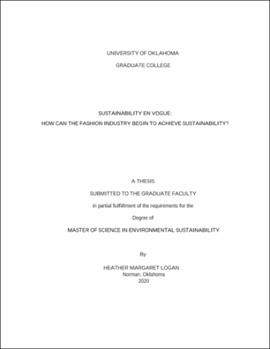| dc.description.abstract | Circularity and sustainability have become hot topics in the fashion industry, with corporations, brands, and designers all pledging to reduce their footprint, utilize more “natural” materials or even waste, and increase transparency. Despite not having methods to gauge and measure the sustainable impact of these commitments, fashion industry stakeholders strive to make and achieve incremental goals. Still, these stakeholders fail to consider the amassing amounts of textile waste that result from consumer practices in the fast fashion industry. Comparable sustainability measurements gauge the impact of sustainability initiatives and end of life alternatives allowing designers, brands, and corporations to plan for circularity and sustainability. This thesis explores the effectiveness of current sustainable impact measurements and proposes methods to improve the applicability of such calculators in driving sustainability transitions within the fashion industry.
Through a literature review of academic life cycle assessments (LCA), this thesis examines the comparability and possible applications of comprehensive sustainability impact calculations on a sustainable, and more circular, future for the fashion industry. Sustainability advocates who expect major brands to stop production and corporations who rely on consumer behavior change to achieve sustainability outcomes alone are negligent; therefore, a measurement system would allow the industry to explore sustainability initiatives which integrate solutions across production, retail, and consumer use. Such measurements allow the fashion industry to plan for consumer use and offer alternatives to polluting processes which occur outside of the current ownership schemes. By mindfully choosing less impactful materials and utilizing alternative end of life options, the fashion industry may be able to begin achieving strong sustainability outcomes. | en_US |

